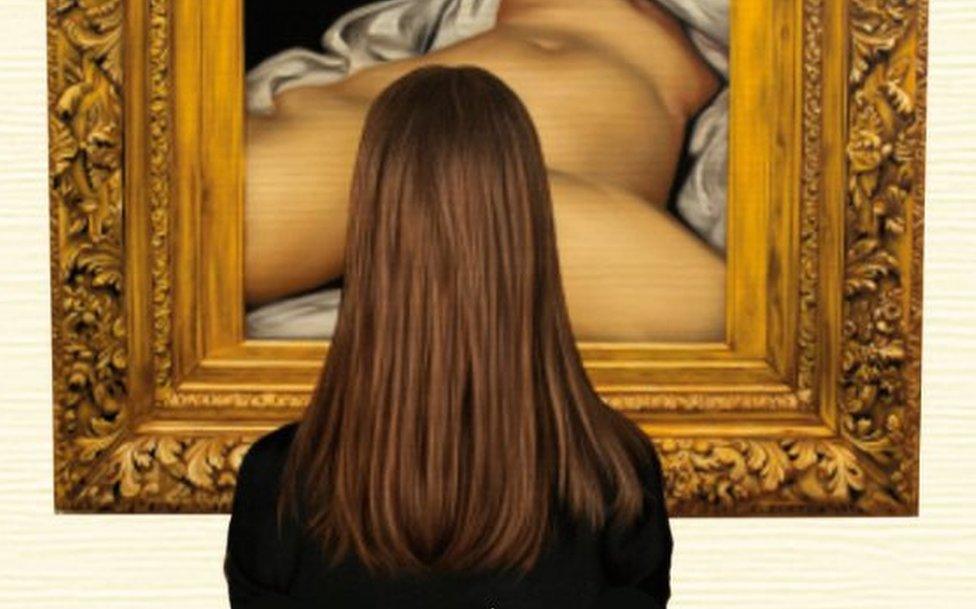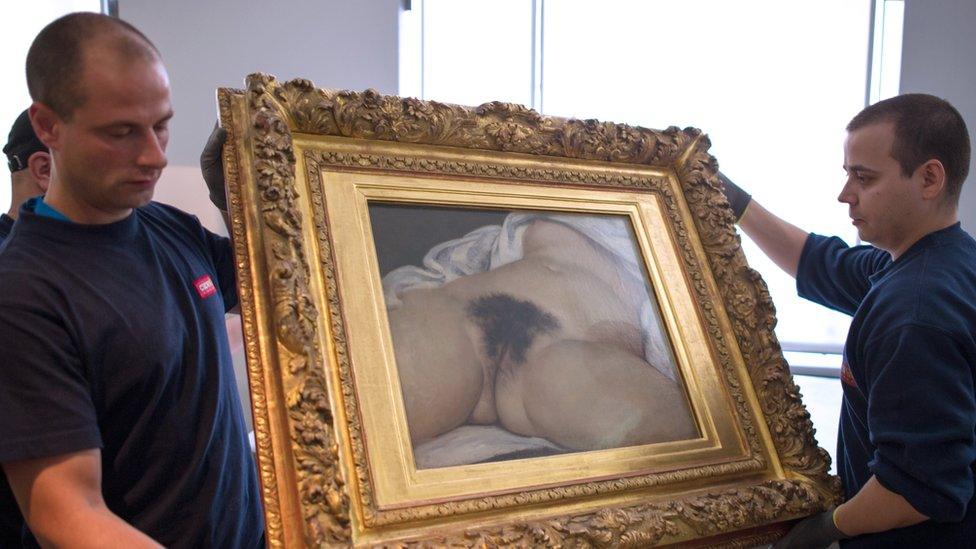L'Origine du Monde: Mystery Courbet nude uncovered 150 years on
- Published

In his new book, Claude Schopp explains how a chance discovery led him to identify the woman in the painting
Scandal has never been far from Gustave Courbet's L'Origine du Monde, one of the most provocative works of art history depicting a naked woman's genitalia and torso.
Now a French scholar may have solved the mystery of whose body was painted so explicitly in his 1866 work, not exhibited publicly in France till 1991.
The subject of Courbet's work was for years assumed to be his Irish lover.
But the woman now thought to be in the picture is dancer Constance Queniaux.
Warning: graphic content in Courbet painting below
French literary expert Claude Schopp stumbled on his discovery as he went through correspondence between two writers, George Sand and the son of Alexandre Dumas.
Who was Constance Queniaux?
Queniaux had retired as a ballet dancer at the Paris Opera in 1859 and aged 34 she was a mistress of Turkish-Egyptian diplomat Halil Sherif Pasha.
In later years she became a woman of some means, given to philanthropic work. She is seen clothed in the top left and bottom left images of the picture below.
The diplomat who commissioned L'Origine du Monde, who was known as Khalil Bey, kept Courbet's painting in his dressing room behind a green curtain, revealing the work to visitors and dinner party guests.
Allow X content?
This article contains content provided by X. We ask for your permission before anything is loaded, as they may be using cookies and other technologies. You may want to read X’s cookie policy, external and privacy policy, external before accepting. To view this content choose ‘accept and continue’.

The former dancer is mentioned in one letter from Dumas. Not only is her name badly spelt but a word was wrongly transcribed in the following line: "One does not paint the most delicate and the most sonorous interview of Miss Queniault of the Opera."
Schopp was puzzled by the word interview, so he consulted the original manuscript in the National Library of France dating back to June 1871 and found the error.
Dumas had written of Ms Queniaux's delicate and sonorous "interior" rather than interview, leading Schopp to deduce that Dumas was writing about the painting.
And that was not all. Having shared his discovery with Sylvie Aubenas at the library, she was convinced he was right.
When Ms Queniaux died in 1908 she bequeathed a painting by Courbet of a bouquet of spring flowers and red and white camellias.
Camellias were the flowers most closely identified with courtesans, and Aubenas told AFP news agency she believed the painting was a gift from Courbet and his Ottoman patron.
The Courbet painting is still considered so risqué that Facebook shut down a French teacher's account when he posted a picture of it.

Courbet's painting was put on public display for the first time in 1995 in the Musée d'Orsay
Who else could Courbet have painted?
Khalil Bey also had liaisons with courtesan Marie-Anne Detourbay, and some have previously suggested she was the woman in the painting.
Many argued the woman was Courbet's own lover, Irish model Joanna Hiffernan, although her hair colour was red rather than the black seen in L'Origine du Monde. Hiffernan was also romantically linked to painter James Whistler.
In 2013, French art expert Jean-Jacques Fernier said he believed that an unsigned painting of a woman's head had been cut off the Courbet work. But there was no recorded evidence that Courbet's work had ever been cut in two.
- Published12 February 2016
